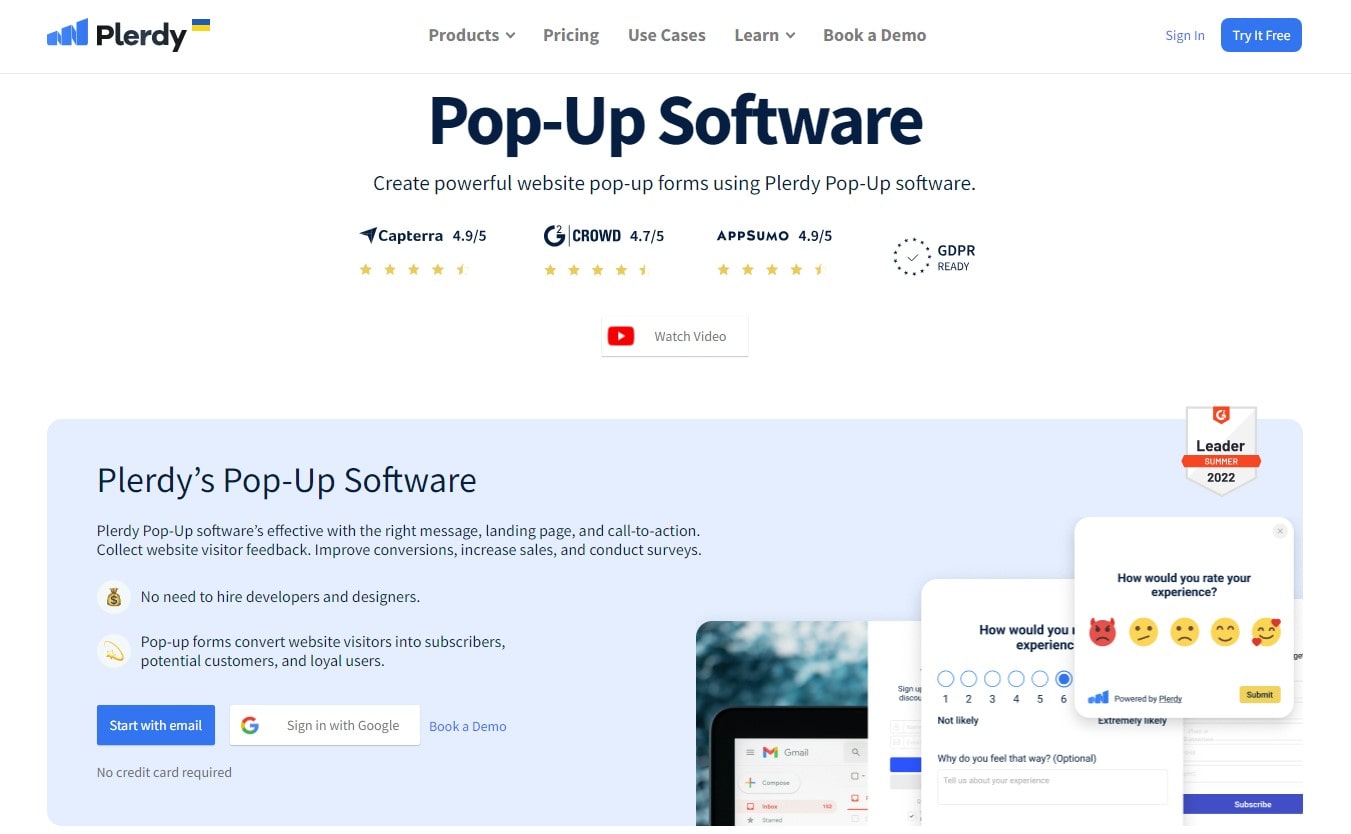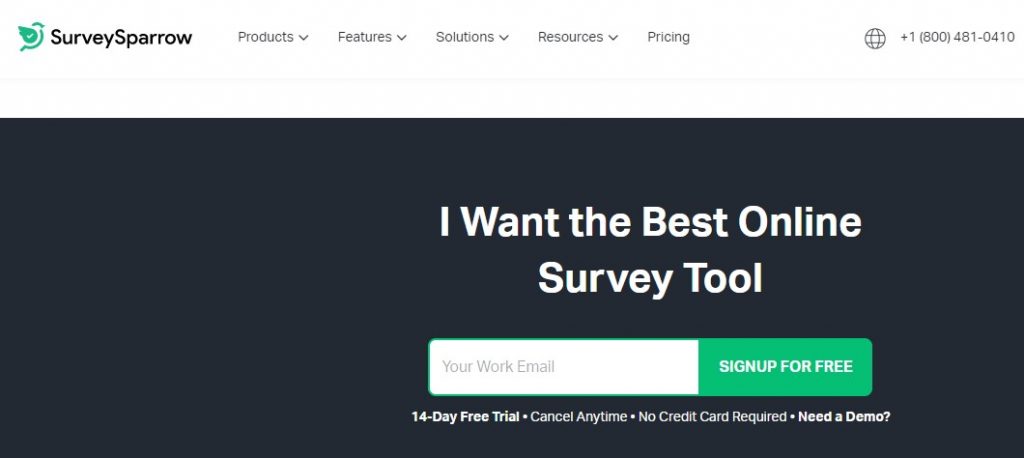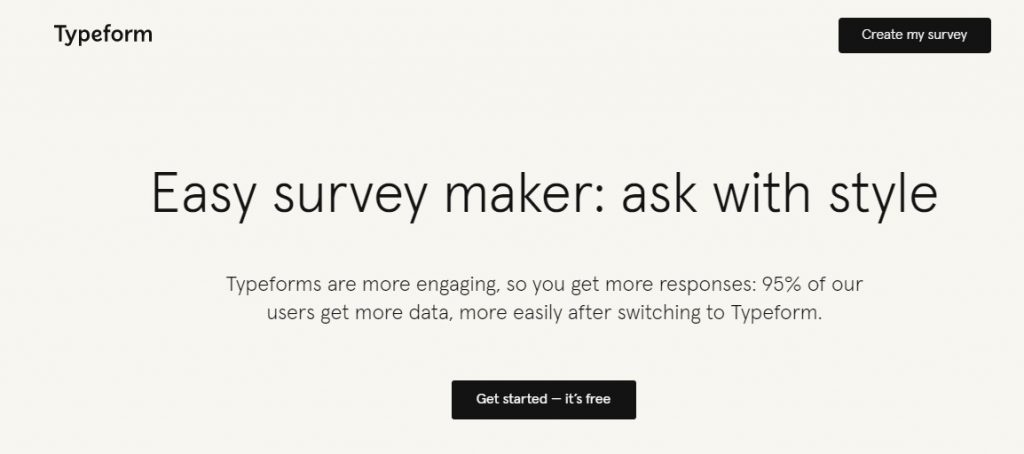Open-ended questions are a powerful tool for understanding a client. In addition, they also help to understand the consumer better.
Open-ended questions are primarily used in sales. It doesn’t matter if you sell machines or software. Open-ended questions will come in handy. But what exactly are they?
The peculiarity of open-ended questions is that they initially assume detailed answers. They invite a lengthy discussion because there is no simple “yes” or “no” response. By asking open-ended questions to your customers, you automatically motivate them to share their opinion about the product or provide additional information about themselves.
Despite the simplicity of this tool, its effectiveness has been long proven. Open-ended questions can be formulated in different ways, and their submission can also be different: a survey, pop-up forms, emails, questionnaires. You can also embed open-ended questions in one of the purchase confirmation steps, thus further encouraging the user to answer them.
Using open-ended questions helps improve the service or product you provide, but to achieve a desirable result, it’s important to understand exactly what questions will work for you.
What are Open-Ended Questions?
Open-ended inquiries are a very effective tactic changing the field of communication. Let us explore the subtleties as a copywriter with a strong awareness of this complex topic.
One very effective conversational tool is an open-ended question. Unlike closed-ended questions, which only ask a basic “yes” or “no,” open-ended questions inspire broad answers. They expose rich levels of data, encourage critical thinking, and start important conversation.
Open-ended questions in the corporate environment help consumers to provide honest opinions. Salespeople might probe, “Can you describe your experience with our product?” Customer service might say, “Could you tell me more about the issue you’re facing?” Changing our approach to communication helps us to get great insights, usually exposing important requirements and issues.
Open-ended questions in the classroom help students to develop their cognitive ability and creativity. “What steps would you take to solve this problem?” a teacher might ask. Alternatively “Can you explain the significance of this historical event?” These questions help a student’s knowledge and logic come out in a way multiple-choice tests cannot.
Counselors and therapists learn to “turn inward” to better understand their clients. In what way do you suppose they would phrase the inquiry? , “What happened to make you feel this way?”
Open-ended questions have several salient features including:
- They produce more than a yes or a no response.
- They inspire long-considered and intelligent answers.
- They exhort the respondent to consider and deliberate.
- Usually beginning with ‘how,’ ‘what,’ ‘why,’ ‘describe,’ or ‘explain.'”
Open-ended questions are not only a matter of detail. They are a dynamic discussion tool, essential for a thorough knowledge acquisition. Use their power to locate discussions delving deeper and exposing hitherto undiscovered levels of insight. Using this instrument helps us to create positive connections in business, education, or personal relationships. Actually, open-ended inquiries represent the direction of efficient communication.
Why Use Open-Ended Questions?

In communication, open-ended inquiries have transforming effect. They have great advantages in many different spheres by inviting careful responses and interesting conversation.
For teachers, open-ended questions inspire critical thinking and intellectual curiosity. When a student wrestles with questions such, “Describe the influence of this event on global history,” they are pushed to analyze closely and hone their analytical abilities. Beyond only assessing memory, open-ended questions encourage original ideas and creativity.
In corporate environments, these inquiries reveal insightful answers. When a salesperson asks a customer, “What unique challenges does your company face?” or “Could you elaborate on how our product helped achieve your goal?” they uncover important information that would be difficult to record with a yes or no question.
Therapists and psychologists also use open-ended questions to probe their clients’ ideas and feelings. By asking “Could you express how that situation made you feel?” they can discover the emotional undercurrents influencing their clients’ life.
The convincing arguments for using open-ended questions consist in:
- Encouraging deep thought and discussion.
- Gathering thorough knowledge and insight.
- Supporting originality and personal viewpoint.
- Advancing in interpersonal relationships a feeling of empathy and understanding.
To have a good conversation, then, it is mostly dependent on posing questions that inspire ideas and debate. They are more than just questions; they are links to a better knowledge, encouragement of real connections, and inspiration of intelligent dialogues. Effective communication is, indeed, concealed in thoughtful questions.
Benefits of Open-Ended Questions

In a conversation, open-ended questions are great tools that act as catalysts for in-depth, meaningful discourse in many spheres. Such queries have many and strong advantages.
Open-ended questions in the classroom help to develop analytical ability and intellectual curiosity. Students who answer “Explain how this scientific theory applies to real-life scenarios,” are guided toward critical thinking and creative problem-solving, therefore enhancing their academic development.
Open-ended questions open the path for practical insights in commercial settings. “Describe the challenges you overcame using our services,” a salesperson might ask, and get priceless input that could direct strategy and product development.
Asking, “Can you discuss the emotions that emerge during these situations?” in therapeutic settings helps experts to grasp thoroughly the inner lives of their clients, so improving the results of counseling.
The several advantages of open-ended questions include in:
- Developing knowledge and comprehension.
- Improving innovation and critical thinking.
- Revealing subtleties and viewpoints.
- Encouraging empathy in close interactions.
Open-ended inquiries thus are far more than tools for gathering knowledge; they are rather agents for understanding, insight, and connection. Whether personal, educational, or business-oriented, they encourage a closer examination of ideas and experiences, change conversations, and help relationships—personal, intellectual, or otherwise develop. Open-ended questions do, in fact, have great power since they enable a multitude of insightful ideas and strengthen our bonds with one another.
Contents
Open-ended question examples

The thoughtfulness of the question asked determines the effectiveness of the answer provided. The more correct questions you ask your clients, the more benefit their answers will bring.
Don t assume that any open-ended question will be productive. For each niche and each product, there are several special questions related to it. They are aimed at studying the customer s impressions, wishes, and comments on the product. Nonetheless, you might benefit from some basic open-ended inquiries, such as:
- What is your name?
- How old are you?
- After starting work for our company, what are your plans?
- Exactly what are you doing this evening?
- Favorite foods?
- What do you value most in this world?
- The design of your product begs the question: why?
- Tell me about your time at university?
- How do you feel about home delivery?
- Why does everyone think that fast food is bad?
- How do you get to the waterfront in your city?
- Which specialty is closest to you?
- What do you think about corporate ethics?
- What do you typically buy?
- Which store are you missing nearby?
- Why did you like this show so much?
- Do you think it is worth changing something in this product?
- Why are you sad?
- Which restaurant are we going to today?
- Why don t you like this musical style?
- In terms of music, what do you typically listen to?
- Why do you like taking pictures so much?
- Work schedule changes—what do you think?
Each of the listed questions is open-ended and encourages the interlocutor to answer in detail. Respondent input is useful in numerous ways. First, using open-ended questions when reaching out to customers gives you a deeper understanding of their needs and concerns. After analyzing the received data, you can create a new product and make it more popular. Finally, you will have a reason to make changes to existing products, making them more competitive. The success of your company can be greatly influenced by asking a few straightforward, open-ended questions.
How to Ask Open-Ended Questions

No question will help your business if it is not asked correctly. This principle also applies to open questions. To maximize results, follow the rules. They will help you formulate questions more accurately and expand the amount of information received.
Principles that will turn any dialogue into useful data for business.
Use Open-Ended Questions Instead of Closed-Ended Questions.
In any dialogue, there is always a question-answer model. During working communication, the interlocutor exchanges questions – most often closed ones. Do you wish to obtain the maximum amount of relevant data? Master the art of transforming yes/no inquiries into more open-ended probes. A preferable question would be, “How was the pasta bolognese?” rather than “Did you like dinner?” You may expect a detailed response from this question.
Start a Dialogue Open-Ended Questions
One of the most common mistakes managers and sales representatives make is ending dialogue with an open question. Yes, sometimes this strategy works, but the share of useful information after the conversation turns out to be negligible. Instead, use open-ended questions to start a dialogue – this way, you can significantly increase the amount of information collected. If one sentence leads the interlocutor to another, then the questions you asked were correct.
Be Careful
Expect responses to branch dialogue. Always listen to the other person during the conversation. You can always ask questions that steer the conversation back to your chosen track if you want to avoid a certain issue.
In addition to applying these rules, consider the value of each open-ended question you want to ask in advance. This creates a whole strategy that will get the indicators you need.
Open-Ended Interview Questions.

Using open-ended interview questions is one of the best strategies for finding good people. Open-ended questions will help you find out the information you are interested in about a person and predict their future behavior. Sometimes the smallest detail can tell more than the largest resume. And subsequently influence the decision. A series of correctly formulated open-ended questions will tell you exactly how a new specialist will behave once in a typical working day scenario.
Here are examples of open-ended questions to use in interviews:
- Describe your ideal job.
- Why should we hire you?
- In two years, where do you see yourself?
- What motivates you?
- Where do you see your strengths?
Which of your accomplishments do you value most?
Many interview questions are open-ended. When planning your strategy for interviewing new hires, you should create your list. Then focus on the specifics of the industry – get the information that is of the greatest value to you.
Open-Ended Sales Questions Example

Sales are the niche in which open-ended questions are in highest demand. Trouble-free intelligence providers, questions are used across all sales niches, regardless of product type and company size.
Open-ended sales questions have several unique traits. First, they are aimed solely at obtaining information about the client and his impressions. Second, based only on customer responses, you can create an effective marketing strategy in no time.
The following are examples of open-ended questions for trading:
- What challenges do you face every day?
- How can you influence the current situation?
- What tools do you lack to achieve your goal?
- Can you fix the current situation?
- What can you say about our cooperation?
- What do you think, what is lacking for your specialists to achieve the required result?
- How much time do you spend following up with possible clients?
- What prompted you to take on this project?
- What are your business goals?
- What opportunities do you see at the moment?
- Do you think our product requires any changes?
- How did our product contribute to solving your problem?
- Why did you become a client of our company?
- What product do you think we should create next?
- What challenges are you facing today?
- What measures would you take to solve your problems?
- How do you rate the suppliers in your service industry?
The answers can make a tangible difference in positive change within your business. This is why open-ended questions are so popular among companies of all sizes.
Open-Ended vs. Closed-Ended Questions
But it is not only open-ended questions that work for our benefit. Monosyllabic closed-ended questions can also be used for marketing purposes. The statistics of answers to a closed question are always higher than to an open one. Why? Saying “yes” or “no” is much easier than indulging in reasoning. Let s use it! Plus, short answers to closed-ended questions are much easier to analyze.
What Can Closed Questions be Used for?
You cannot squeeze out a lot of information from them. But the answers to these questions work great when evaluating a product in a survey format, where answers are already prepared for customers. Thus, the percentage of responding users increases – they do not need to write a detailed answer.
Short answers help you quickly and accurately assess the situation. For example, the question at the end of the order, “Did you like cooperation?” explains whether everything is in order with the user experience on the company s website. Likewise, the question “Are you satisfied with our product?” will allow evaluating the success of the company s developments and their real value from a customer’s point of view.
Open-Ended Questions for Preschoolers

Let s return to open questions – they are used not only in commerce today. They can (and should!) be used in the training and development systems of the younger generation.
Open-ended questions for preschoolers help stimulate their logical thinking. This question cannot be answered in monosyllables – the child needs to work hard and compose a detailed answer to the question posed. By asking difficult questions, parents gradually prepare the little person for further education and life in society.
Also, open-ended questions positively affect the development of linguistic skills, which will undoubtedly benefit any child, regardless of age.
When introducing open-ended questions into learning processes, start with the elementary ones:
- What can be done about it?
- Why do you like this toy?
- What do you think this dinosaur looked like?
This skill will come in handy at school and help in the future to communicate with society. How did we know about this? Surveyed experts!
Open-Ended Survey Questions

Polling is one of the best methods to get opinion statistics. Let s consider its features. Asking questions lets you understand others. Using statistics, you can understand the opinion of the majority. Second, consumer polling is an integral part of developing a development strategy and interaction with a company’s customers. Finally, surveys can help close the “holes” in the user experience – this will have a positive effect on consumer comfort.
Decide which specific type of question is right for you. Experts divide open questions for data collection into five categories, namely:
- Questions about customer behavior – They allow you to understand why and for what reasons users make certain decisions
- Questions to get feedback from a customer – They are aimed at studying the opinions of customers about the company and your products.
- Questions for marketing research – They are used to evaluate marketing strategies. They allow you to evaluate the effectiveness of the developed plans and the need for improvements.
- Questions for competitive analysis – It is used to assess the competitiveness of your products over peers from other companies.
Open-ended questionnaires of the right type contribute to niche success.
Open-Ended Questions in Counseling

Any consultation requires honesty from the client. However, not every client will be eager to immediately discuss their issues. This is why open-ended questions are widely used for counseling and therapeutic purposes.
By motivating a person to have a frank conversation, a specialist simplifies their work. They do not have to look for the source of problems on their own – the client will tell them why they are seeking advice.
Open-ended questions always prompt a detailed response, which is important for experts in all industries. For example, in medicine, a detailed answer to a leading doctor s question can shorten the duration of treatment. The psychotherapist’s task is to bring a person to a frank conversation and help them cope with the accumulated problems.
Leave comments in the article and ask the right questions.
